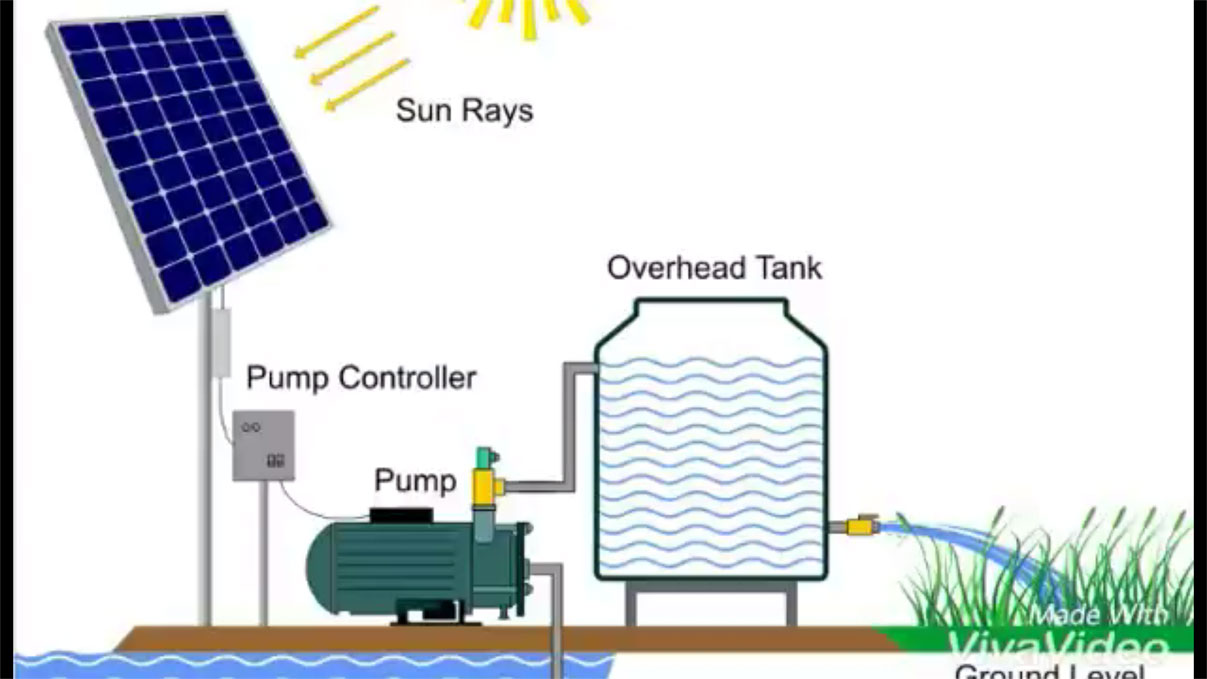
Solar pumps are specifically designed to accept DC power directly from the solar modules and are optimized for operating under less-than-ideal sun conditions. Where conventional AC-powered pumps require a stable voltage and frequency to operate, solar pumps can operate over a wide range of voltage and available current. Conventional AC-powered pumps require large amounts of power to move large volumes of water in a short period of time. Solar pumps typically move a smaller volume of water over an extended period of time. This method requires far less power, which minimizes the size and cost of the PV array.
Irrigation for small-scale applications, In areas with a remote well and limited access to the power grid.
Farmic Enterprise
There are several methods for pumping water in remote areas, such as windmills, gas/diesel pumps, and ram pumps. But most of these options are either too expensive to install, or for fuel and maintenance, or require specific site conditions to operate.
Solar pumps can work for most locations and are at full capacity when needed most: during warm, sunny days. In temperate regions, they can be used year-round—which can be particularly helpful for potable water, animal grazing, and other farming operations. For many sites, a solar pump is often the best option for reducing cost and labor.

In areas with a remote well and limited access to the power grid, solar pumps are the best option—particularly where utility interconnection costs more than ₹2,00,000 usually about one-quarter to one-third mile from the grid. (In my area—western New York—the cost for utility power is about different price per foot, so even PV-based water-pumping systems that are one-eighth mile from the nearest power line can be cost-competitive.) Specific applications include:
Domestic water supplies for off-grid homes and cabins. Although solar water pumps are used in this application, usually the home has an existing power system. In that case, it’s far more cost-effective to run an efficient DC or AC pump off that system.
Livestock watering for pond and stream protection, rotational or prescribed grazing, and remote pasturing. This is the most popular use for solar pumping systems. They have proven to be cost-effective even without the use of federal or state incentives.
Aquaculture for aeration, circulation, and de-icing. Aquaculture is another application where the need for power coincides with peak solar availability. De-icing applications require oversized arrays due to less-than-optimum sun conditions in winter.
Irrigation for small-scale applications. With the recent reduction in the cost of PV modules, solar irrigation is fast becoming cost-effective. Solar pumps are available that can move the larger volumes of water needed for irrigation.
